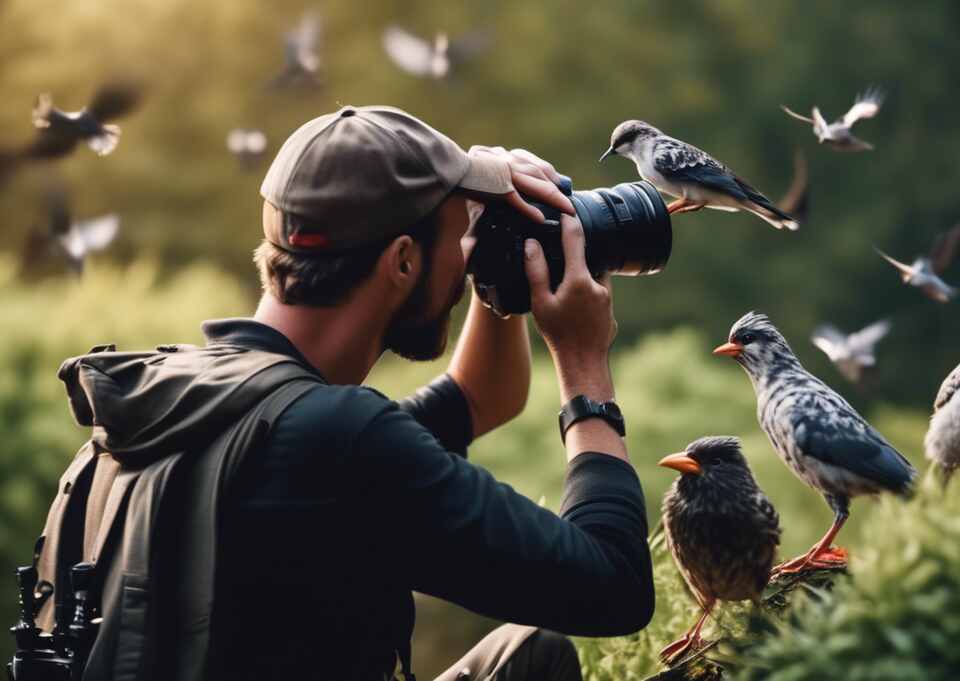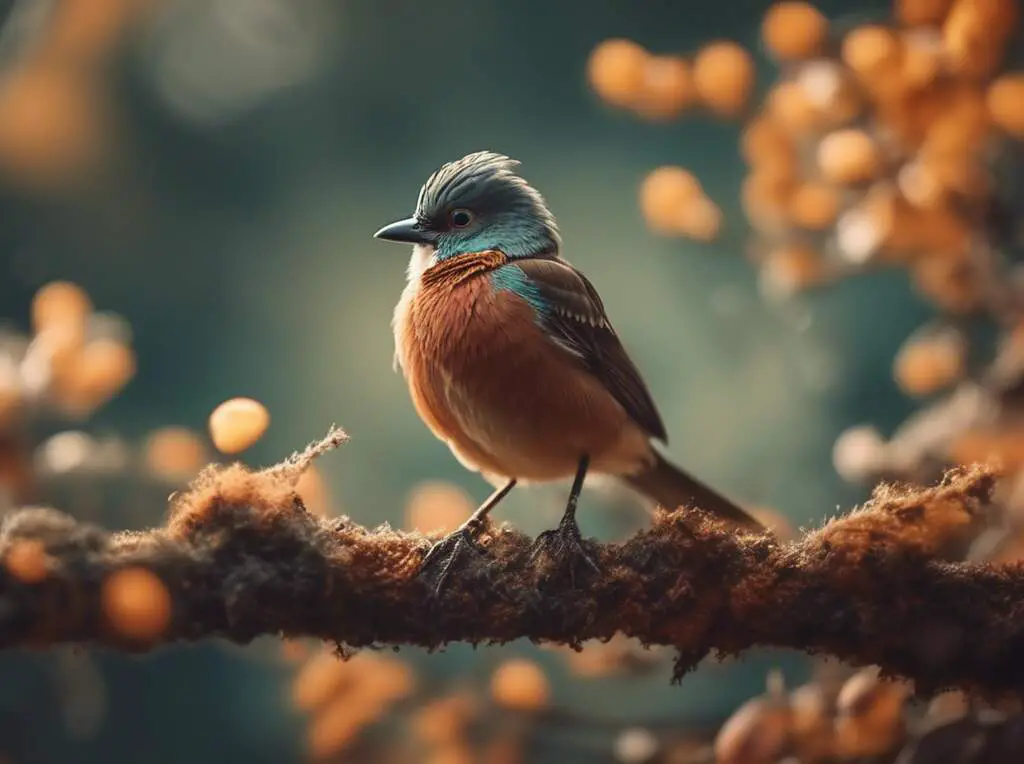Photographing birds can be a rewarding experience for any photographer, whether you are a beginner or a seasoned professional. Capturing those fleeting moments of birds in flight or perched on a branch requires skill, patience, and the right camera settings.
One crucial aspect of bird photography is determining the best aperture settings to use in different situations to achieve stunning results. Let’s dive into the world of bird photography and explore the importance of aperture settings.
Table of Contents
Best Aperture Settings for Bird Photography
Understanding Aperture in Bird Photography
Aperture refers to the opening in the lens through which light passes to reach the camera sensor. It is denoted by f-stop numbers such as f/2.8, f/5.6, f/8, and so on. In bird photography, the aperture setting not only controls the amount of light entering the camera but also impacts other essential factors such as depth of field and sharpness of the image.
The Ideal Aperture Range for Bird Photography
When it comes to choosing the best aperture for bird photography, there are a few factors to consider. A wide aperture, such as f/2.8, allows more light to enter the lens, making it suitable for low-light conditions. However, a wide aperture also results in a shallow depth of field, which may blur the background but can make the bird stand out prominently.
On the other hand, a narrow aperture, like f/8 or higher, allows less light to enter but provides a broader depth of field. This is beneficial when you want to capture detailed shots of birds with intricate backgrounds in focus. Finding the right balance between a wide and narrow aperture is crucial for achieving stunning bird photographs.
Adjusting Aperture for Different Bird Photography Scenarios
- Birds in Flight: When photographing birds in flight, a wide aperture (e.g., f/5.6) is recommended to track the fast-moving subject effectively. This aperture setting helps in isolating the bird from the background while maintaining focus on the moving target.
- Perched Birds: For capturing detailed shots of birds perched on branches or feeders, a narrower aperture (e.g., f/8 to f/11) works well. This setting ensures that both the bird and the surrounding environment are in sharp focus, ideal for bird portraits.
- Group Shots: In situations where you are photographing a group of birds or capturing flock behavior, using a moderate aperture like f/6.3 can help maintain a balance between subject isolation and background detail.
Experimenting with Aperture Settings
While the recommended aperture settings provide a starting point, don’t be afraid to experiment with different apertures to achieve unique and creative shots. Understanding how aperture affects your bird photography allows you to adapt to changing lighting conditions and artistic preferences.
Mastering the art of selecting the best aperture for bird photography is a continuous learning process. By understanding the impact of aperture on your images and experimenting with different settings, you can elevate your bird photography skills and capture breathtaking moments in nature.

Utilizing Natural Light in Bird Photography
Benefits of Utilizing Natural Light in Bird Photography
When it comes to capturing stunning bird photographs, one of the critical factors that can enhance the quality of your images is the effective use of natural light. Natural light has a unique way of illuminating your subject and bringing out the vibrant colors and intricate details of birds. Understanding how to leverage natural light can significantly improve the overall quality of your bird photography.
Importance of Choosing the Best Aperture
One essential aspect to consider when utilizing natural light in bird photography is choosing the best aperture settings for your shots. The aperture setting on your camera determines the amount of light that enters the lens. When shooting birds in natural light, it is crucial to select the optimal aperture to achieve the desired depth of field and sharpness in your images.
Best Aperture for Bird Photography
The best aperture for bird photography typically ranges between f/5.6 to f/8. These aperture settings allow you to maintain a balance between a sharp subject and a pleasing background blur. By using apertures within this range, you can ensure that your bird subjects remain in focus while creating a beautiful bokeh effect in the background.
Understanding Depth of Field
Depth of field refers to the area in your image that appears sharp and in focus. When photographing birds, having control over the depth of field is crucial for capturing the intricate details of your feathered subjects. By choosing the right aperture setting, you can control the depth of field and ensure that the bird stands out against a soft, blurred background.
Achieving Sharpness and Detail
Selecting the appropriate aperture for bird photography is vital for achieving sharpness and detail in your images. While wider apertures like f/2.8 can create a beautiful background blur, they may result in a shallow depth of field that makes it challenging to keep the entire bird in focus. On the other hand, narrower apertures such as f/11 or f/16 can increase the depth of field, ensuring that more of the bird remains sharp and detailed.
Tips for Using Aperture in Bird Photography
To make the most of your aperture settings in bird photography, consider the following tips:
- Experiment with different aperture values to find the optimal balance between sharpness and background blur.
- Keep in mind the lighting conditions and adjust your aperture accordingly.
- Use smaller apertures when photographing birds in groups to ensure that all subjects are in focus.
- Pay attention to your camera’s depth of field preview function to visualize the effects of different aperture settings.
Selecting the best aperture for bird photography plays a crucial role in capturing stunning images of these fascinating creatures. By understanding how aperture settings impact your photos and practicing with different values, you can elevate the quality of your bird photography and create visually striking images that showcase the beauty of nature.
Conclusion
As a bird photographer, understanding the best aperture settings for your shots is crucial in capturing stunning images. By adjusting your aperture settings, you can control the depth of field, ensuring that your subject remains in focus while creating a beautiful background blur. When it comes to bird photography, using a wider aperture like f/4 to f/5.6 can help isolate the bird from its surroundings, creating a visually appealing image with a creamy bokeh effect.
In addition to aperture settings, utilizing natural light is essential for successful bird photography. The soft, warm light of early morning or late afternoon can enhance the colors of your bird subjects and create a more pleasing image. Avoid harsh midday sun, as it can create strong shadows and overexposure. Position yourself so that the light is falling directly on the bird, illuminating its features and bringing out its natural beauty.
When using a wider aperture for bird photography, such as f/4 to f/5.6, you can achieve a shallow depth of field that beautifully blurs the background, making your bird subject stand out. This is particularly effective when photographing birds in their natural habitat, as it helps to isolate the bird from the distractions in the background. Experiment with different aperture settings to find the right balance between subject sharpness and background blur for each shot.
While natural light is ideal for bird photography, there are times when you may need to use artificial lighting to enhance your images. In low-light conditions or when shooting birds in flight, you may need to use a flash to freeze the motion and capture sharp, detailed images. When using a flash, be mindful of the intensity and direction of the light to avoid harsh shadows and overexposure. Consider using a diffuser or reflector to soften the light and create more natural-looking results.
The best aperture for bird photography depends on the effect you want to achieve in your images. A wider aperture like f/4 to f/5.6 can help isolate your bird subject and create a pleasing background blur, while a narrower aperture like f/8 to f/11 may be more suitable for capturing detailed shots of birds in flight or perched on branches. Experiment with different aperture settings and lighting conditions to find the perfect combination that brings out the beauty of your feathered subjects.
Mastering the best aperture settings and utilizing natural light are essential skills for bird photographers looking to capture stunning images of their avian subjects. By understanding how aperture affects depth of field and using light to enhance your photos, you can create captivating bird images that truly stand out. So grab your camera, head outdoors, and start experimenting with different aperture settings to take your bird photography to the next level.


